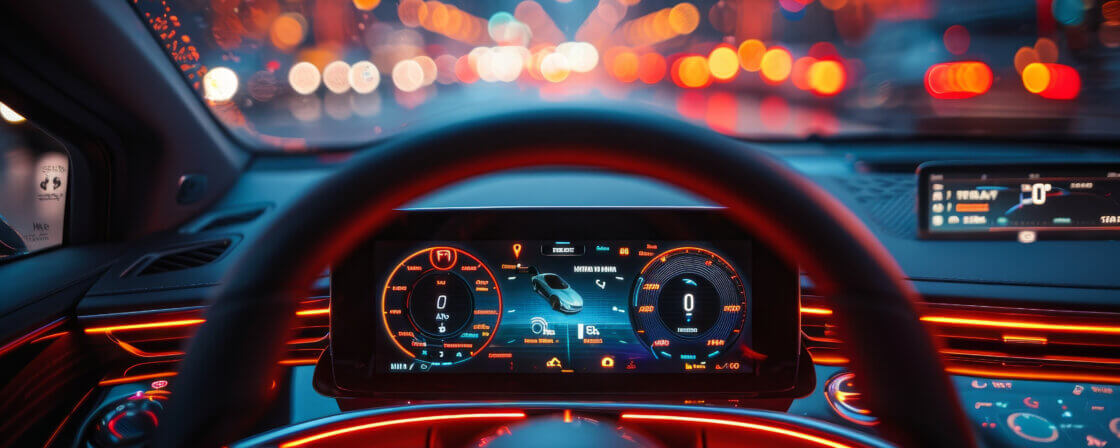What is SAE Level 3?
To understand the meaning of the amendment, let’s first explain what SAE Level 3 means. It is one of the six levels of driving automation as classified by the Society of Automotive Engineers (SAE International):
- Level 0-2: Driver assistance systems (e.g. adaptive cruise control, parking assist) – the driver is always fully responsible.
- Level 3 (conditional automation): The vehicle takes over the steering, but the driver must be ready to intervene at any time.
- Level 4: Fully autonomous driving in restricted environments (e.g. city centres, campuses).
- Level 5: Full autonomy without steering wheel or pedals, anywhere and under any conditions.
SoLevel 3 means that the car can drive itself, for example, on the highway, but the driver must be “backed up”. It must be ready to take over within ten seconds of being called upon. From a legal point of view, this raises entirely new questions about liability, roadworthiness and accidents.
What changes from 1 January 2026?
The amendment to the Road Traffic Act and the Act on the Conditions of Operation of Vehicles on Roads, signed by the President, will allow the operation of homologated vehicles with SAE Level 3. These will be able to take control of driving on selected sections of Czech motorways. However, this is not free driving without supervision, the driver must be present in the vehicle and ready to intervene.
The amendment lays down basic conditions for this:
- the vehicle must be approved in accordance with international type-approval regulations,
- the automated steering system may only operate in precisely defined traffic and technical conditions,
- the driver must be alerted by the system if it is necessary to take over the driving, at least 10 seconds in advance.
Are you solving a similar problem?
Need advice on the legal aspects of operating an autonomous vehicle?
Contact our law firm – we can help you with homologation, liability and contractual documentation for suppliers and partners. Enter the future of management with legal certainty.
I need some advice
- When you order, you know what you will get and how much it will cost.
- We handle everything online or in person at one of our 6 offices.
- We handle 8 out of 10 requests within 2 working days.
- We have specialists for every field of law.
Safety as the main argument
One of the main reasons for adopting the amendment is to improve road safety. The statistics (WHO) are clear – up to 90% of road accidents are caused by human error. Autonomous systems do not fall asleep through fatigue, do not phone while driving or lose focus while driving. They react faster than humans and can make decisions based on a comprehensive analysis of the traffic situation.
From a legal perspective, however, this means that liability needs to be defined precisely – the manufacturer, software developer or vehicle operator can be held liable for an accident caused by an autonomous system, not the driver. Czech legislation so far assumes that the driver remains legally responsible. However, this may change as technology develops.
From a legal point of view, a new regulatory framework for the development, testing and operation of these vehicles will need to be established, including definitions of liability, insurance and operating conditions.
Zdeněk Petzl, Executive Director of AutoSAP: We are opening the way to modern and safe mobility. The global market for driver assistance systems is expected to grow 180-fold between 2023 and 2035.
What world experience shows
While the Czech Republic is opening its doors to SAE level 3, some cities around the world are already running level 4 or 5 vehicles. In San Francisco, USA, for example, autonomous taxis from Waymo (Google) or Cruise (GM) are operating. These cars have no driver, yet carry passengers in normal city traffic. But the experience is mixed. There have been several accidents in 2023 that have led to the temporary revocation of some operators’ licences. Residents have complained of ‘confused’ cars blocking traffic or unable to pass the site. At the same time, data showed that autonomous taxis had fewer accidents per kilometre travelled than conventional vehicles.
Driverless autonomous buses are already running routinely in Wuhan, China, and both food delivery and passenger transport without human supervision are being tested. At the same time, China is investing massively in developing its own infrastructure for autonomous driving (road sensors, digital maps and communication networks). Legally, China is much more flexible than the EU on autonomous mobility – laws are being adapted to the speed of technological development. However, this is offset by lower levels of data protection and less emphasis on ensuring human rights.
What is next for the Czech Republic?
The signed amendment is just the first step. The plans include:
- legislation for SAE level L4+, i.e. fully autonomous vehicles without human intervention,
- testing facilities on selected sections of the road,
- liability and insurance regulations, as current laws do not allow for fully autonomous vehicles at all,
- czech involvement in the European debate on the future of mobility and the EU Industrial Action Plan.
According to AutoSAP, the Czech Republic is expected to remain at the forefront of technological developments in the field of mobility if it is able to respond flexibly to new challenges and legally cover all aspects of the operation of these systems.
Tip for article
Tip: Do you ever drive faster than the speed limit? Do the police stop you from time to time and deal with you for an offence? We will advise you on how to defend yourself against a fine.
What does this mean for drivers and companies?
In practical terms, the amendment will allow the purchase and operation of autopilot vehicles on the motorway from 2026. This will allow the driver to read the newspaper, deal with emails or spend time with family while driving, but only under strict conditions. For companies, this means they can invest in a new generation of fleet, including logistics vehicles, buses or company electric vehicles equipped with autonomous technologies.
From a legal perspective, however, we must draw attention to a number of as yet unresolved questions: who is liable for the accident – the driver, the manufacturer, the software? How will the insurance of autonomous vehicles work? Who will be liable for cyber-attacks on driving systems? How to ensure data protection in a system that collects and evaluates location data? Only practical experience is likely to provide the answers.
The Czech Republic has moved a generation ahead with the amendment to the Road Traffic Act. The introduction of SAE Level 3 in 2026 represents not only a technological advance, but also a legal and social challenge. Experience from abroad shows that the path to full autonomy is complex and requires clear legal boundaries.
Summary
On 24 April 2025, the President of the Republic signed a major amendment to the law that will allow the operation of SAE Level 3 autonomous vehicles on selected sections of Czech motorways from 1 January 2026. These vehicles will be able to drive autonomously, but on the condition that the driver remains present and ready to intervene. The amendment thus opens the way to safer and more comfortable mobility, promotes innovation and strengthens the competitiveness of the Czech automotive industry. Experience from San Francisco and Wuhan in China shows that autonomous vehicles are already working in practice, but they also bring new challenges in the areas of liability, insurance and data protection. The Czech Republic is now among the technology leaders, and the next legislative steps will be towards fully autonomous L4+ systems. However, the introduction of autonomous driving requires careful legal definition, as liability for accidents, system hacking or data misuse does not yet have a clear solution.
Frequently Asked Questions
Which vehicles will be able to drive autonomously from 2026?
From 1 January 2026, vehicles homologated for conditional autonomous driving, i.e. with SAE Level 3 technology, will be able to drive on selected sections of Czech motorways. These vehicles can drive autonomously in certain situations, but the driver must be ready to take over the wheel within ten seconds of being called.
Does the autonomous car have to have a driver at all times?
Yes. Even when autonomous mode is switched on, the driver must be present in the vehicle and remain legally responsible for the operation of the vehicle and be ready to take over at any time if the system asks him to do so.
What are the legal risks of operating an autonomous vehicle?
While technology is advancing rapidly, the legal framework has yet to catch up with reality. In the event of an SAE 3 autonomous vehicle accident, the onus is still on the driver. In the future, issues of manufacturing defects, software bugs or cyber-attacks will also need to be legally addressed.
Where are autonomous vehicles already in regular use?
The most well-known examples are in San Francisco, where driverless autonomous taxi services are operating, and in Wuhan, China, where unmanned buses and delivery vehicles are already operating. These projects show the possibilities and risks of full autonomy in urban traffic.
What does the amendment mean for companies and investors?
Legislation on autonomous driving creates opportunities for automakers, technology companies and investors. It will enable testing and operation of new solutions directly on the Czech market, thus supporting development, employment and export potential in the field of smart mobility.




